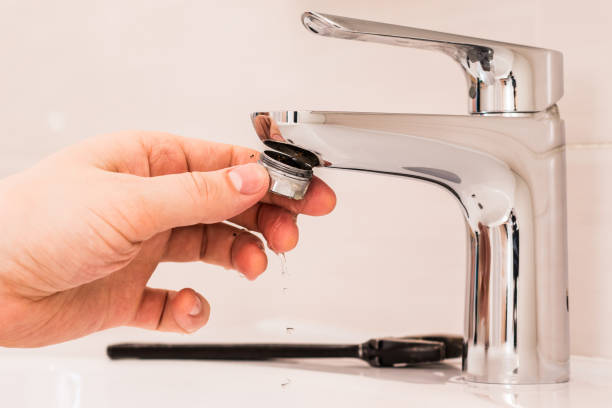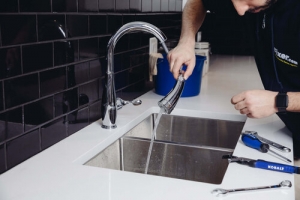On this page further down you can get a good deal of good quality ideas involving Why It's Important to Fix Leaky Faucets.

Leaking faucets might look like a small aggravation, yet their impact exceeds simply the nuisance of the audio. From drainage to sustaining unneeded economic expenses and health and wellness dangers, disregarding a leaking tap can cause various consequences. In this write-up, we'll explore why it's crucial to resolve this typical house problem immediately and effectively.
Wastage of Water
Environmental Impact
Leaking taps contribute dramatically to water wastage. According to the Environmental Protection Agency (EPA), a single faucet trickling at one drip per second can squander greater than 3,000 gallons of water annually. This not only pressures water sources yet also impacts environments and wildlife based on them.
Financial Prices
Boosted Water Bills
Past the ecological impact, leaking faucets can blow up water bills considerably. The gathered waste gradually converts right into greater utility expenditures, which can have been stayed clear of with timely repair services.
Potential Building Damage
Furthermore, long term dripping can cause harm to components and surfaces bordering the tap. Water build-up can cause staining, deterioration, and even structural issues if left ignored, causing additional repair costs.
Health and wellness Issues
Mold and Mildew Growth
The constant existence of wetness from a trickling tap develops an optimal setting for mold and mildew and mildew development. These fungis not only compromise indoor air top quality yet likewise position health and wellness threats, especially for individuals with breathing conditions or allergic reactions.
Waterborne Conditions
Stationary water in dripping taps can become a breeding place for microorganisms and other virus, increasing the threat of waterborne illness. Impurities such as Legionella bacteria grow in stationary water, possibly resulting in serious ailments when ingested or inhaled.
Do it yourself vs. Specialist Repair work
Advantages and disadvantages of DIY Repair Work
While some may attempt to take care of a dripping tap themselves, do it yourself repairs come with their very own set of challenges. Without correct expertise and tools, DIY efforts can exacerbate the issue or lead to insufficient repair work, extending the problem.
Advantages of Working With a Specialist Plumber
Working with a specialist plumber makes sure that the underlying reason for the leaking tap is attended to successfully. Plumbings possess the experience and tools to diagnose and repair tap problems effectively, conserving time and minimizing the risk of further damage.
Step-by-Step Guide to Dealing With a Dripping Tap
Devices Required
Prior to trying to fix a trickling tap, gather the necessary tools, including a flexible wrench, screwdrivers, replacement components (such as washing machines or cartridges), and plumber's tape.
Common Tap Issues and Their Solutions
Determine the sort of tap and the details issue creating the drip. Usual problems consist of worn-out washing machines, corroded valve seats, or defective O-rings. Describe supplier guidelines or on-line tutorials for detailed guidance on fixings.
Preventive Measures
Routine Upkeep Tips
To stop trickling faucets, carry out routine maintenance such as cleansing aerators, checking for leakages, and replacing damaged parts promptly. Additionally, take into consideration setting up water-saving gadgets or upgrading to more reliable fixtures.
Importance of Prompt Fixes
Dealing with leaking faucets as soon as they're seen avoids more water wastefulness and prospective damage, eventually saving both water and money in the long run.
Impact on Property Value
Perception of Well-Maintained Residential Property
Keeping a residential or commercial property in good condition, including addressing maintenance issues like leaking taps, improves its regarded value and worth among possible purchasers or lessees.
Impact on Resale Value
Qualities with well-maintained plumbing fixtures, consisting of taps, command greater resale worths in the property market. Resolving leaking taps can contribute to a favorable perception during residential or commercial property inspections and settlements.
Ecological Obligation
Private Payment to Conservation
Taking obligation for fixing leaking taps straightens with wider initiatives towards water conservation and ecological sustainability. Every person's activities jointly make a substantial impact on maintaining priceless resources.
Sustainable Living Practices
By focusing on punctual repairs and embracing water-saving behaviors, people add to lasting living methods that profit both existing and future generations.
Final thought
Dealing with a leaking tap surpasses plain ease; it's a crucial action towards preserving water, reducing economic costs, and safeguarding health and wellness and residential property. Whether with do it yourself repair work or professional assistance, acting to fix dripping faucets is a small yet impactful way to promote responsible stewardship of sources and add to a healthier, a lot more sustainable future.
How to Fix a Leaky Faucet: Step-by-Step Repair Guide
A leaky faucet may seem like a simple annoyance, but if it's not fixed promptly, that leak could cost hundreds to potentially thousands. From water damage to mold, mildew, and high water bills, even a tiny leak can be catastrophic if left unattended. Damage like this can even affect the overall value of your home, so it's important to take the right approach for leaky faucet repair. You may need the help of a plumber in some cases, but we've got a few tips you can try on how to fix a leaky faucet before calling the pros.
Four Faucet Types
When you're learning how to fix a leaky faucet, the first step is knowing what kind of faucet you're working with! There are four common types.
Cartridge Faucets
Cartridge faucets come in one- or two-handled varieties. In one-handled cartridge faucets, hot and cold water combines in a single cartridge. In the two-handled versions, hot and cold water are controlled separately and mixed in the faucet.
Ball Faucets
Ball faucets have a single lever you push up and down to adjust the pressure and rotate to change the temperature. A slotted metal ball controls the amount of water allowed into the spout.
Compression Washer Faucets
They're the oldest type of faucet, but they're still used in many homes — especially older ones. Compression faucets have two separate handles that, when turned, raise or lower the washer that seals a water valve. This valve stops water from flowing through the faucet when it is turned off.
Disc Faucets
Disc faucets rarely need to be repaired due to their maintenance-free design. The water flow is controlled by two discs — the upper one raises and lowers against a fixed lower disc, creating a watertight seal. If your disc faucet starts leaking, you may need to replace the seals or clean residue buildup from the inlets.
Fixing a Leaky Faucet
Step 1: Turn Off the Water
Whether you're learning how to fix a leaky bathtub faucet or how to fix a leaky kitchen faucet, always turn off the water supply to your working area when you're fixing a leak. The last thing you want is a flood added to your list of things to fix.
Look for the shutoff valves below your sink or around the tub and turn them clockwise to stop the water flow. If your faucet doesn't have shutoff valves, you may need to turn off the water for the whole house. Check to make sure it's off by turning the faucet on. If nothing comes out, you're ready to start the repair.
Step 2: Take Apart the Faucet
How you disassemble your faucet depends on the type of fixture you have. You can use a flathead screwdriver to remove the caps on top of the handle or handles for cartridge and compression faucets. Inside, you should see handle screws. Unscrew these with a screwdriver to remove the handle.
Disc- and ball-style faucets will typically have an inlet screw near the handle, and removing that will reveal the interior of the faucet.
Detach the Valve Stem
For cartridge- and compression-style faucets, you'll see the inner valve stem or cartridge once you remove the faucet handles. If you have a compression faucet, unscrew the brass valve stem. If you have a cartridge faucet, pull out the cartridge. If your cartridge has been in place for a while, it may require some tools or extra force to remove it due to mineral deposits.
Examine and Replace Parts
Once you've removed the parts, check them out to confirm what needs to be replaced. You may see corroded rubber washers, O-rings, stems, or cartridges. On a ball-style faucet, check the seats and springs for damage.
If you need to repair a leaky disc faucet, check the inlet and seals on the lower disc.
Once you determine what parts must be replaced, visit your local hardware store. Bring the damaged parts with you to ensure you can purchase the correct components to replace them.
Clean Valves and Faucet Cavity
If you've removed a stem or cartridge, you may notice mineral buildup in the faucet's threads. Use white vinegar to clean the valve seat by soaking it for a few minutes, then scrub it away with a soft toothbrush and rinse with warm water. You can also clean the interior of the faucet in the same way.
Reassemble the Faucet
Once your faucet is cleaned and the required parts have been replaced, it's time to reassemble it. Put the pieces back together and slowly turn the water supply back on. Doing this slowly is crucial because too much initial water pressure can damage the new hardware you've just installed.
https://homewarranty.firstam.com/blog/how-to-fix-leaky-faucet

We hope you liked our piece about 4 Common Reasons for a Leaky Faucet. Thanks a lot for finding the time to read our content. Loved our piece? Please share it. Let another person locate it. We truly appreciate your readership.
Comments on “The Causes Behind Correcting a Leaking Faucet”